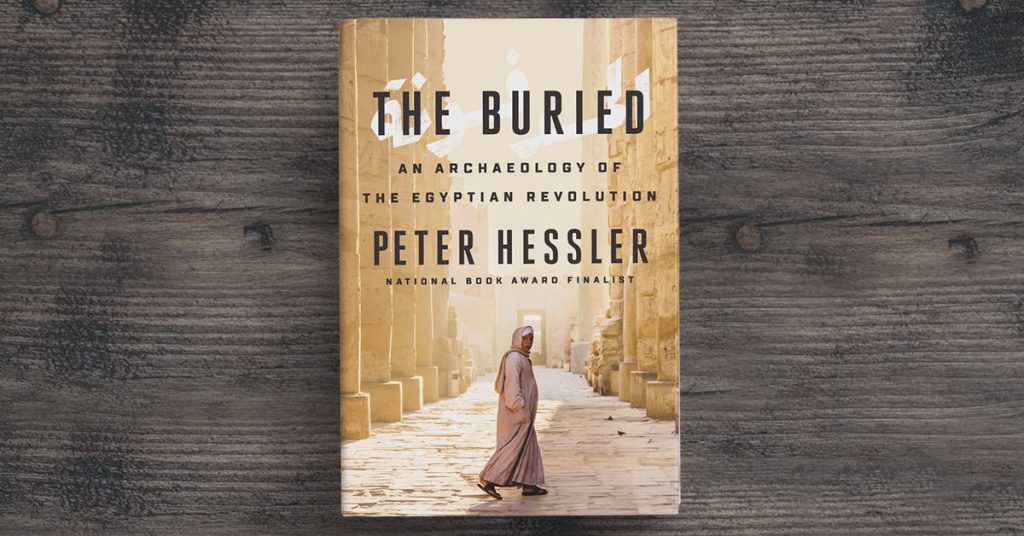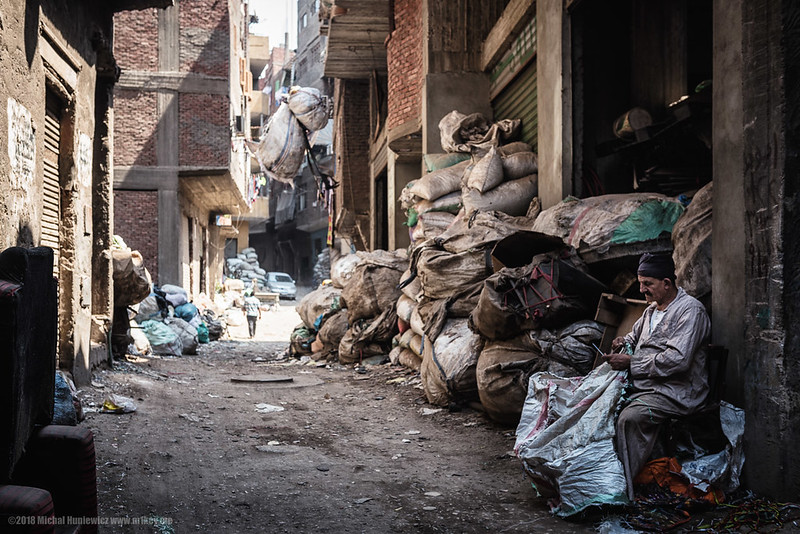The 2011 revolution, the First Intermediate Period, then the era of Morsi, and the Second Intermediate Period, then the presidency of current President Abdel Fattah Al Sisi—so begins the ancient to modern parallel timelines of Peter Hessler’s newest literary work The Buried.
Throughout the last few years, Hessler’s work would make its way to my social media feeds. Initially, I knew nothing about the journalist and writer whose interests—modern day eastern countries and ancient civilizations—would perfectly align with mine.
Curiously enough, one day, I decided to read his New Yorker article about the late Egyptian President Mohamed Morsi, which I found to be replete with a narrative much like that of fictional stories.
Immediately, I was hooked, so I proceeded to read every single piece of Hessler’s online work.
Dining with a friend one day, he told me to read Hessler’s The Buried, calling it an excellent and thought-provoking read.

Similar to my experience, Hessler takes on the Middle Eastern country directly after the Arab Spring. And, also like me, he spent a couple of years living in China, fascinated with its ancient and contemporary history, so his decision to move to Egypt was hardly a surprising one.
In 2011, he makes the bold move of relocating to Egypt along with his wife, journalist Leslie T. Chang, as well as their twin daughters. His goals were as following: explore the country, namely the capital, learn Arabic (Hessler also chose to learn Chinese while he was in China) and experience the numerous extant archeological excavations.
In the five years that he stayed here, he achieved these goals; he also covered the various political developments as Egypt’s population took on the aftermath of 2011, the presidency of Mohamed Morsi, and eventually, the ascension of President Sisi to the presidential seat.
A humane narration and unique storytelling
The book is divided into three self-explanatory parts: The President, the Coup and the President.
Throughout, he narrates the lives of everyday Egyptians: Sayyid the garbage man, Manu the gay translator, Rifaat the Arabic teacher, various Muslim Brotherhood members, politicians, scholars and Zamalek residents.

While discovering Egypt from its Delta all the way to Upper Egypt, he makes it a point to paint a literary portrait of not only the various individuals he meets, capturing quirky and funny anecdotes along the way, but he also infuses his narrative with knowledge about ancient Egypt.
“Months later, many Egyptians who were active in the first wave of [the] Arab Spring would describe their experiences in similar terms. Nothing seemed to exist but the present: no time for plans, no time for memories. But eventually a sense of order was restored. In Cairo, a council of military officers established a transitional government, and they promised to hold democratic elections for a new parliament and a new president. Tahrir celebrated; the street clashes ended. By late March, real police were patrolling again in Abydos,” he narrates.
Hessler might be one of the few journalists I know who had access to excavation sites around Egypt, profiting from a personal relationship with scholars and archeologists who familiarized him with ancient Egyptian concepts of time, kingship, administration, ancient heresy and unstable rules.
And, what is truly unique about the inclusion of these concepts is that they help establish an understanding of the progression (or, sometimes, lack thereof) of the Egyptian way of doing things.
For the most part, Hessler’s tone is crisp and familiar, filled with anecdotes and descriptions without coming off as judgmental or condescending, even while he is put in clearly frustrating situations, where he becomes familiarized with Egyptian corruption, theft, blatant patriarchal practices and homophobia.
“In 2010, a team from the University of Pennsylvania was excavating some tombs from the Middle Kingdom when they stumbled upon the corpse of a modern teenage girl. The scene suggested that she had been murdered and then hastily interred at some point within the past half a century. The cause of death was strangulation—a cord was wrapped around the girl’s neck. She appeared to have been about fifteen years old. The archaeologists reported it to the local police, who expressed no interest: to them, the case was as cold as that of the six hundred retainers who accompanied King Djer into the afterlife. And so the Pennsylvania team reburied the girl in the same place where they had found her. She might have been the victim of a rape, or perhaps an honor killing, a practice that still occasionally occurs in the clannish villages of Upper Egypt. Ritual, sacrifice, the vocabulary of power—maybe we have words for what happened here, or maybe we don’t.”
Moreover, impressions meticulously recorded by a Western journalist are key to understanding how the revolution’s crucial events and places—Tahrir Square, Rabaa tents, local elections—might have been perceived and made sense of by an outsider.

Author:
Carlos Latuff
A lack of representation
While the book is a fantastic introduction to those who are curious about Egypt’s most recent societal and political developments since the Arab Spring, one major drawback I would point out is the lack of universal representation.
One startling fact that made itself obvious to me is that the book focused much on those who were underprivileged, such as oppressed women in Upper Egypt or toiling garbagemen. There were very few mentions of other Egyptians of different socio-economic standings and so, a slightly reductionist impression of Egyptians is conveyed.
After all, who wants to read about the Egyptians who enjoy the benefits of wealth or who profit from a private education? Seldom, a non-Egyptian, who would opt to read about what makes Egypt ‘different’, ‘unique’ and ‘intriguingly exotic’ instead.

While it is impossible to accurately describe every single variation of Egypt’s population, somehow overlooking the North of Egypt, Egyptian women (except for Sayyid’s wife, Wahiba, and some factory women mentioned once), the entrepreneurs, the artists who found the space to express themselves and propel the cultural scene forward, gives the impression that something is lacking.
Undeniably, we expose ourselves to what or who we are most fascinated with. This seems to hold true for Hessler, who found inspiration in the lives of ‘ordinary, everyday’ citizens. However, in a country like Egypt, where discrepancies in class, religion and sex can be felt at every kilometer, ‘ordinary’ and ‘everyday’ are nonexistent. Thus, it is still important to represent, as little or as much as possible, such variety for the period of 2013-2016, which was particularly replete with conflicting forces and voices.
Still, Hessler is a fantastic writer and The Burried is a highly recommended read for those who are seeking longform, narrative journalism on contemporary Egypt and Egyptians.







Comments (0)